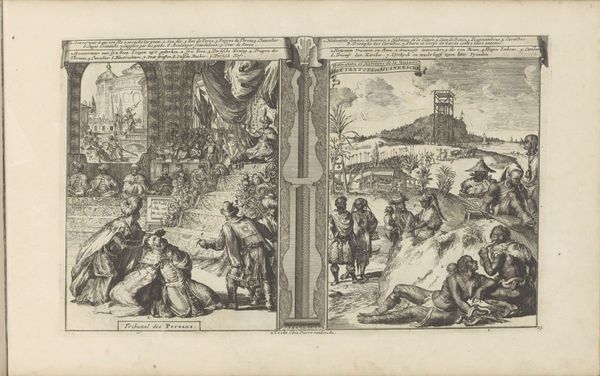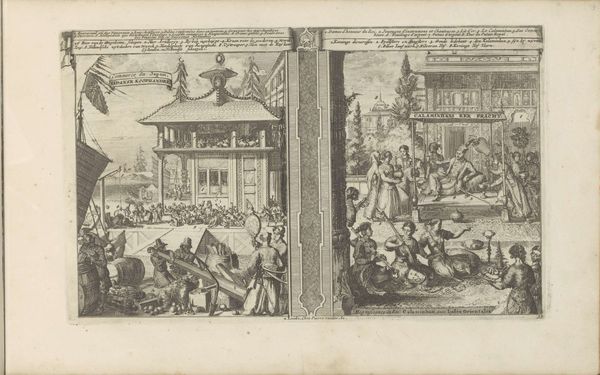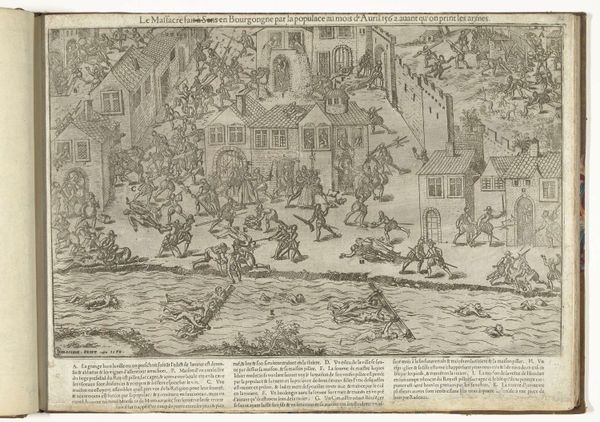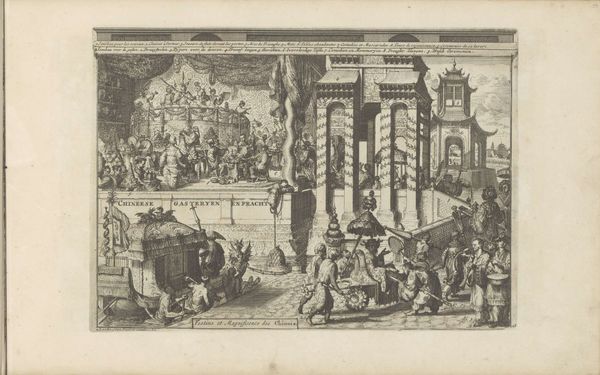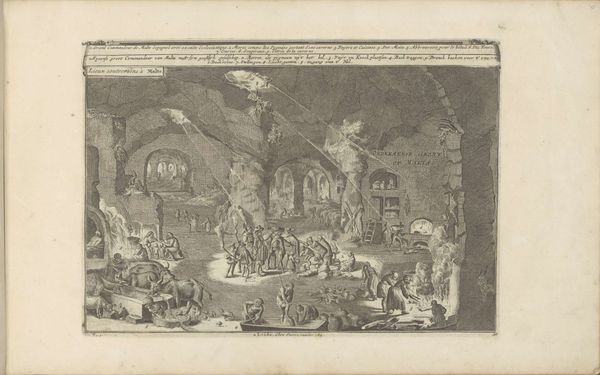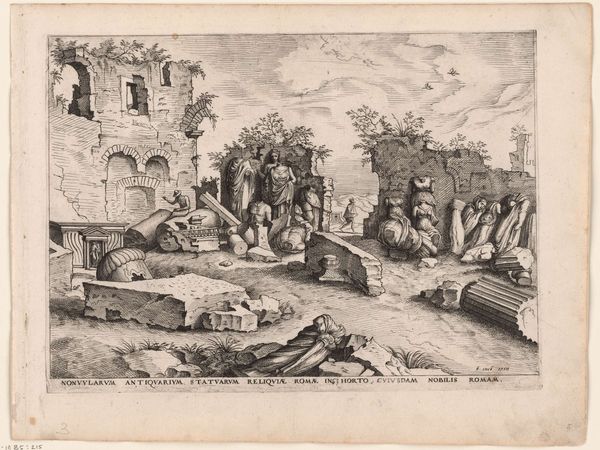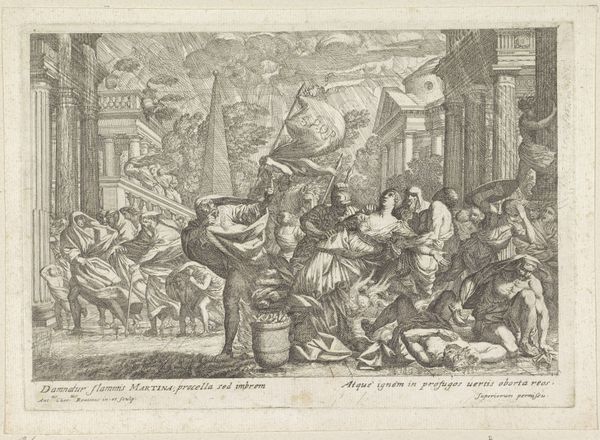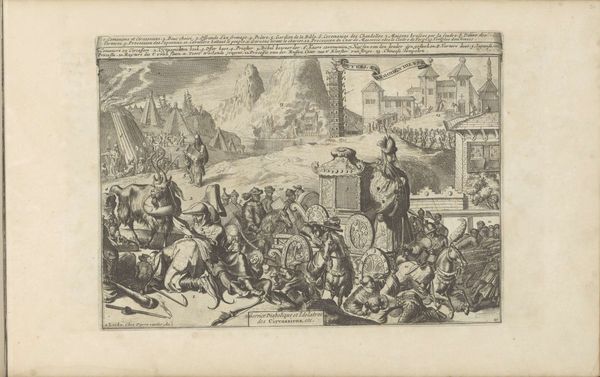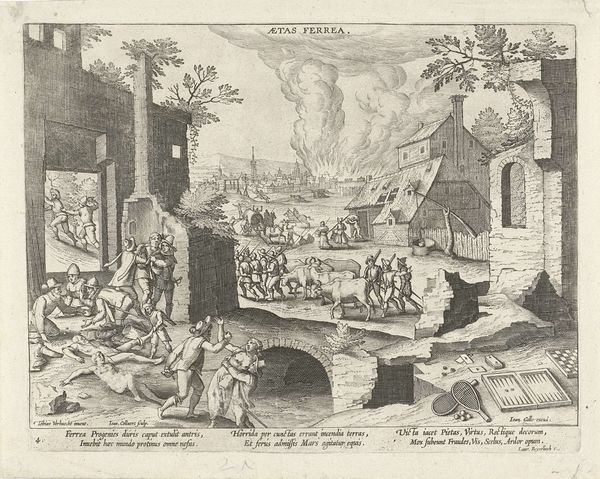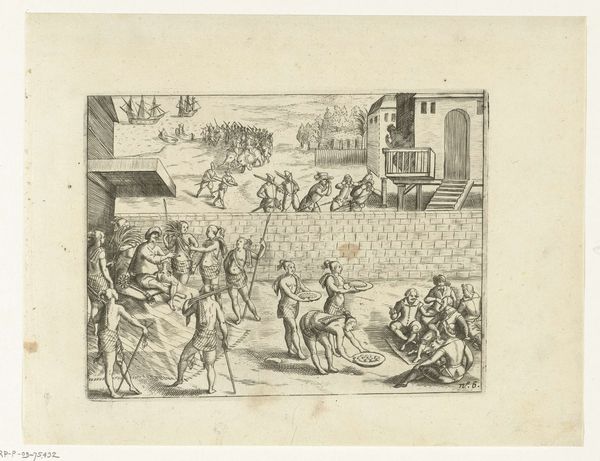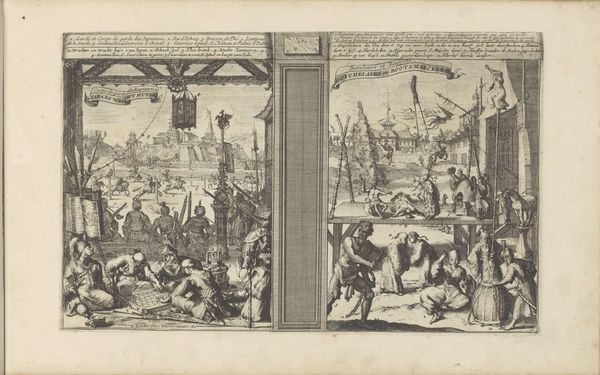
print, engraving
#
narrative-art
#
baroque
# print
#
cityscape
#
history-painting
#
engraving
Dimensions: height 209 mm, width 290 mm
Copyright: Rijks Museum: Open Domain
Curator: Welcome! Today, we're examining "Zonde en boete," or "Sin and Punishment," an engraving attributed to Romeyn de Hooghe, created sometime between 1682 and 1733. It's currently housed here at the Rijksmuseum. Editor: My goodness, it's… intense. Like a fever dream caught in ink. A very, very detailed fever dream. The density of figures and structures crammed into that small space is overwhelming. Curator: Indeed. It’s a dense allegory, steeped in the religious and political turmoil of its time. The cityscape is almost a stage for various acts of penitence, or perhaps what De Hooghe considered corrupt religious practice. We're seeing what could be interpreted as abuses of power alongside scenes of baptism. Editor: Baptism and flagellation! Not a combination you see every day. All these tiny figures… it's a little grotesque, if I'm honest. Like a Bosch painting on a very bad hair day. Look at the man on the left, weighed down! That elaborate carriage behind him doesn't exactly scream humility either, does it? Curator: That scene does sharply criticize indulgences, connecting earthly riches with supposed spiritual failings. The contrast is meant to highlight what De Hooghe perceived as the hypocrisy of certain religious institutions. Consider also the Abyssinian landscape; a faraway land full of sinners repenting from wrongdoing. Editor: So it's propaganda then, masquerading as… art? Though those miniature mountains have a peculiar charm. Makes me want to escape this purgatory. I mean pilgrimage! Look how tiny some of these details are! What was the poor bloke who made this using, a hummingbird feather for a brush? Curator: The skill is remarkable, absolutely. De Hooghe was a master of the engraving medium, using it here to convey very specific socio-political critiques in an era rife with religious conflict and evolving power structures. Its very small scale afforded wide dissemination and the ready circulation of controversial images. Editor: I can almost hear the righteous indignation crackling off this print. Though maybe a little subtlety would’ve made his point even more forceful. Curator: Perhaps. But sometimes the loudest voices cut through the noise. Editor: Well, it certainly has made me ponder the relationship between power, belief, and the artist’s hand… and given me the urge to wash my hands thoroughly. What about you? Curator: I am thinking about how effectively printmaking amplified critical voices like De Hooghe's in early modern Europe.
Comments
No comments
Be the first to comment and join the conversation on the ultimate creative platform.
